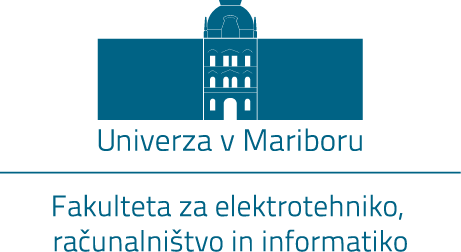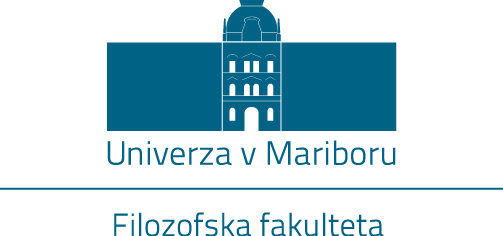The portal was established as part of an applied research project:
Likovna umetnost v prostoru mesta Maribor / Visual Arts and Architecture in the Spatial Context of the City of Maribor.
Project number:
- L6-4315
Project webpage at SICRIS:
Financed by:
- The Slovenian Research Agency
Co-financed by:
- The Municipality of Maribor
- The Slovenian Academy of Sciences and Arts
Project duration:
- July 2011-31 December 2015
Project developer:
- The France Stele Institute of Art History ZRC SAZU
Participating organisations:
- The Department of Art History, Faculty of Arts, University of Maribor (FF UM)
- The Institute of Informatics, Faculty of Electrical Engineering and Computer Science, University of Maribor (FERI UM)
Project leader:
- Assoc. Prof. Barbara Murovec, PhD
Co-workers:
- Assoc. Prof. Marjeta Ciglenečki, PhD, coordinator at FF UM
- Prof. Marjan Heričko, PhD, coordinator at FERI UM
- Nejc Bernik
- Alenka Di Battista
- Andrej Furlan
- Mitja Gradišnik
- Simona Kermavnar, MSc
- Assist. Prof. Tina Košak
- Ana Lavrič, PhD
- Assist. Prof. Franci Lazarini, PhD
- Renata Komić Marn
- Katarina Mohar
- Gregor Plavčak
- Blaž Resman, PhD
- Assoc. Prof. Polona Vidmar, PhD
The project is an applied research, focusing on the study of Maribor, the second largest city in Slovenia and the capital of Slovenian Styria, through its art history, and presents part of the fundamental research in a useful way to the wider interested public through a web page, workshops, exhibitions, conferences and lectures. Cooperation with the residents of Maribor, students and tourists is established. The results of the project are set towards the continuous integration of humanist heritage into the development of the city. By using various methodological approaches connected to the development of space through time, art topography, public monuments, art institutions and the people who represented and still represent Maribor's art heritage, art in the city is researched especially from the points of view of society and space, patronage and reception. Therefore, the project tries to uncover how the social and historical roles of this space, with special attention placed on the patronage structure, art market demands and today's understanding of art in the city, are reflected in Maribor's urban image, individual art monuments and collections. The project work involves collecting, analysing and comparing material, doing archival and field research, documenting monuments, carrying out comparative research in art historical libraries, writing original scientific discussions and specialized texts, creating a (web) guide of Maribor and preparing a scientific conference. Among the key monuments that the project team researchers dealt with, are the Cathedral on Slomškov trg (Slomšek Square), the Jesuit church of St. Aloysius, the Minorite monastery, the plague column on Glavni trg (Main Square) and Rotovž (Town Hall). From the point of view of art patronage, different religious orders, which were or are still active in the city, are researched; special attention is placed on the bishops of Lavant (especially Michael Napotnik (1889–1922) and the portraits in the permanent collection of Maribor's bishopric manor in Betnava), noble and bourgeoisie patrons (among others to the collection of the Counts of Herberstein, the main part of which was formed in the second half of the 17th century and is kept in Maribor Regional Museum, and the Goedel-Lannoy family). In regards to public monuments, focus is placed on sculptures that were produced in the scope of the Forma viva symposium of sculpture, as well as onto others, which are connected to historical figures, such as Emperor Franz Joseph and Rudolf Maister. In relation to the function of artworks, which is closely linked to the patrons' intentions and goals and which was constantly in service of religion, representation or prestige and identity, as well as of church and secular politics, the question of art quality is emphasised. Art monuments are discussed in wider spatial contexts. The time of increased construction in Maribor from the mid-19th century onwards, which is characterised by Historicist styles (on the one hand in the scope of religious commissions, and on the other, from the point of view of housing, public-administrative and urban problems), is researched more thoroughly, while the research of the 20th century is focused on modern architecture and the urban planning of Maribor with an emphasis on the workers' architecture, which reached a high standard in Maribor. Art, its protagonists and researchers had a very different role in Maribor, which was an industrial centre in the 20th century, in comparison to official capitals, such as Graz and Ljubljana. On the one hand, the aim of this project is to deepen, expand and connect the existing partial relevant findings, and on the other, to begin researching so far unstudied topics in order to fill in the gaps and, therefore, enable an insight into the character, purpose and social dynamics of art in the spatial context of Maribor.
The FERI UM Institute of Informatics participates in the research of the field that concerns the development of the web portal. It is focused on evaluating and choosing appropriate technologies as well as optimizing and ensuring the portal's adequate capacities based on the specificity of the volume/quantity and the type of data that should be effectively stored and transferred over the network. The portal is developed in Java with the use of open-source software.
Project group bibliography:
http://izumbib.izum.si/bibliografije/J20130817212011-L6-4315.html





